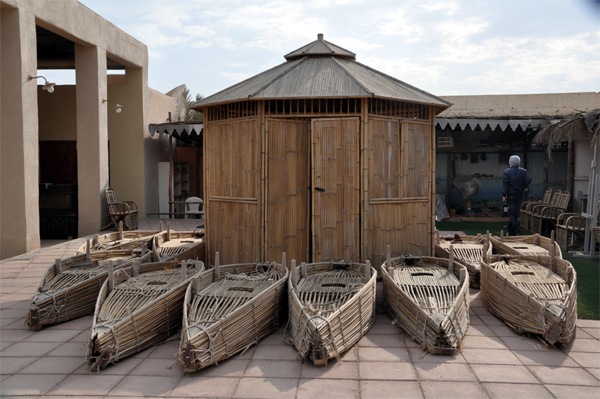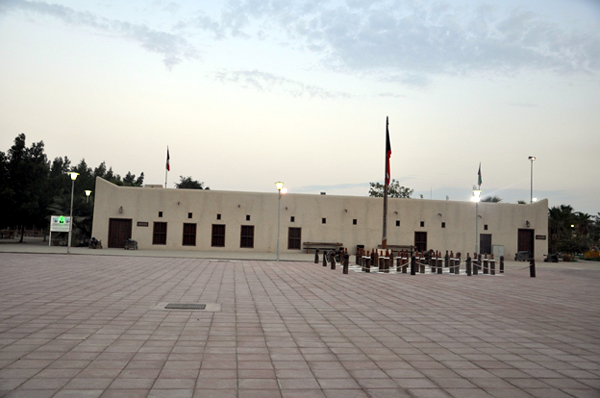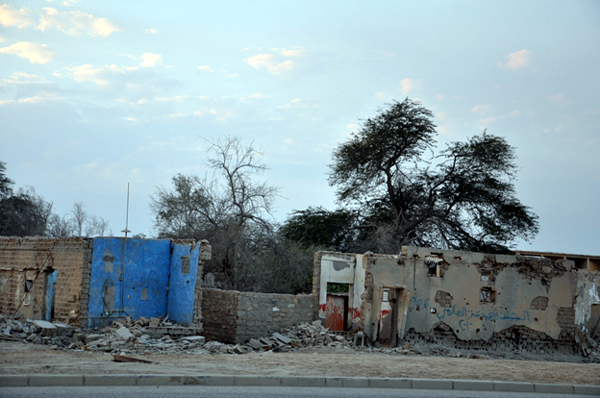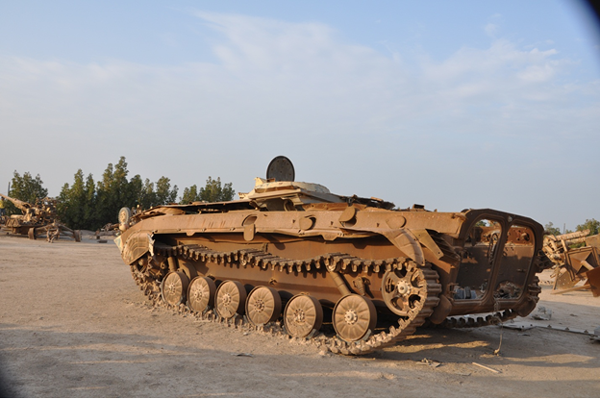Dec 14, 2025
Dec 14, 2025

Believe it or not, we have set foot on the good old land of Dilmun dating back to the Bronze Age believed to be based in Bahrain around 2000BC. What a surprise! Just half an hour boat trip on a fine afternoon from the mainland of 21 century Kuwait with its modern highways, luxury cars, high-rise shopping centers and Iphone toting population, we had a sneak preview of its own past. And that is not all! Centuries later, in 3d century BC, this little island, of all places, was colonized and made an outpost by none other than the Greek emperor Alexander the Great himself. The earlier name Icaria as it was called by the Greek after the Greek island in Aegean Sea may hold the clue to what attracted them to this island. The present name Failaka, also derived from ancient Greek fylakio, meaning ‘outpost’, is an indelible stamp left behind by the Greek that bear witness to this ancient Greek connection.
Two buses run by the tour operator took us, small groups of Kuwaitis, Egyptians, Indians etc. from the landing to the main centre of the island about ten minutes’ drive away which houses the heritage village. We got down in front of the Heritage village and walked through the entrance between an old style mud and stone security cabin on the right and a fairly large building which housed the reception to enter a large courtyard.
The first disappointment we met with once we entered heritage village was the pitiable absence of a professional tourist guide to appease the curiosity of the visitor regarding the early life in the island, the experiences of the Iraqi invasion and its aftermath. The visitor is left to himself, to his imagination or whatever he has learnt from other sources in preparation for the visit.
A few steps past the security cabin we could see many boats in their ancient form similar to kayak made of probably palm leaf stem, arranged around a wooden cabin. Further ahead, several wooden trunks and other artifacts were spread across the floor rather clumsily.
Bordering the farther side of the courtyard is the main attraction of the heritage village, the palace of Sheikh Abdulla Al Salem Al Sabah which is showcased as a small museum, noticeable especially by the symbolic display of giant wooden chess set arranged at the centre of the building though their positions seemed not so flattering. Apart from this symbol of power, the building, to call it a palace might be an exaggeration, being just a larger than normal traditional Kuwaiti house, sand colored, mud plastered single storied construction, has very little claim to grandeur. It seems to be a stark reminder of the harsh realities of the desert life. In the vastness of the desert everything tends to be diminutive. Even the basic needs of life which elsewhere are taken for granted are acquired through unimaginable hardship.
At the entrance is the diwaniya where life size sculptures of human forms are arranged squatting on the floor seemingly engaged in a lively chat. Through a corridor we entered into another inner courtyard around which various elements of the palace with their paraphernalia are distributed such as sitting room, bed room, bride’s room, kitchen, weapon room etc. A small well with wooden pulley posts is a regular sight in almost all old Kuwaiti houses. Hand-pulled carts are exhibited at one side of the inner courtyard.

Sprawled around the palace is a typical old village of closely packed little houses with mud plastered walls and tiled roofs and sloped-roof porches jutting out into the alleys shaded with trees winding around the houses. The cool serene atmosphere evokes strong feelings of nostalgia in the visitor.
Various touristic interests provided around the village include camel ride, horse ride, kayak rowing, pedal boating, a swimming pool etc., which are a mere shadow of the aspirations of this island.
Just a few minutes’ walk from the heritage village is the Failaka Restaurant. We had collected the lunch coupon provided by the tour operator from the reception. As a matter of fact, the restaurant offered a decent buffet lunch catering to any average taste setting at rest my worries about the type of food available in such an isolated area.
At 3.30PM, as directed, we reported to the reception of Heritage village for a bus tour of the island.
The second crushing disappointment which almost defeated the purpose of our visit was waiting for us. The island tour doesn’t permit us to visit the most sought after ancient archaeological sites left behind by the Greek which was a matter of extreme curiosity for me. We were told that it required special permission from the concerned ministry. Any remaining hope of at least a distant view of the location of the site was dashed by our strangely incommunicative Egyptian bus driver.
Outside the heritage village, things were, unfortunately, pretty much depressing, to say the least. The ravages of Iraqi war are still very much alive here with abandoned, bullet riddled houses in varying degree of destruction lining up all along the streets. For me, who had lived through the first few weeks of Iraqi invasion this was a shocking reenactment of those precarious days though in a silent, picturesque way.

Prior to Iraqi invasion of 1990 Failaka Island was home to about 2000 residents. One can imagine the idyllic life in this peaceful island in the pre-invasion era. Water and power came from mainland through submarine pipeline and cable. The skeleton of a fish and vegetable market and an ice factory could be seen just outside the Heritage village in totally destroyed form. In addition to public ferry service most of the residents had private boats in which they shuttled between the island and mainland.
Imagine the shock and pain to find, when you wake up one fine morning, that your country is struggling for life under the feet of your brotherly neighbor. The residents of Failaka Island were driven out by the invading army and at this end of history, by a quirk of fate, the island again became an army camp. Houses became targets for shooting practice. The land was turned to a mine field.
After the liberation of Kuwait all the inhabitants of Failaka Island were rehabilitated by the Kuwait Government in various parts of the mainland. In the weekends they still visit the island in their private boats to reminisce about their past life.
While the resilient mainland was up and running after the liberation, this little island lay wounded for many years, cut off from the rest of the world, its soil impregnated with the treacherous seeds of war, the landmines. Public access was denied till 2007 when it was finally cleared of landmines and opened to the public.
The bus continued its journey through mostly barren desert land. Our first stop was a graveyard of military vehicles from the Iraq war. Totally destroyed military hardware, tanks, rocket launchers, guns, pick up cranes etc. are kept in an open ground for visitors to move around, clamber up, take pictures and to ramble down the memory lane to a unique event in history in which a small nation was completely devoured by a giant neighbor but was miraculously liberated within a short span of eight months by an international force.

The second stop was a camel farm where we could see hundreds of camels of different size and color, among them many calves as young as a few days old. Most of them seemed to be so accustomed to the sight of visitors that many people were seen taking pictures resting their arms on them. One of them caught up close to me unawares while I was busy with my camera before being alerted by my friend. The pale evening sun provided the perfect setting to match the camels and the desert. After the cameras had their fill of camels we took leave of the farm.
Back in the Heritage village we continued to explore the village with whatever time we got. There were a couple of young men in the pool kayak boating as we joined with our pedal boats. The horse riding was already closed and a wooden ship exhibited nearby was deserted. It was time to say good bye to this unique island in the Arabian Gulf which stands as a living time capsule for the world to explore and understand.
03-Sep-2012
More by : Parameswaran KV